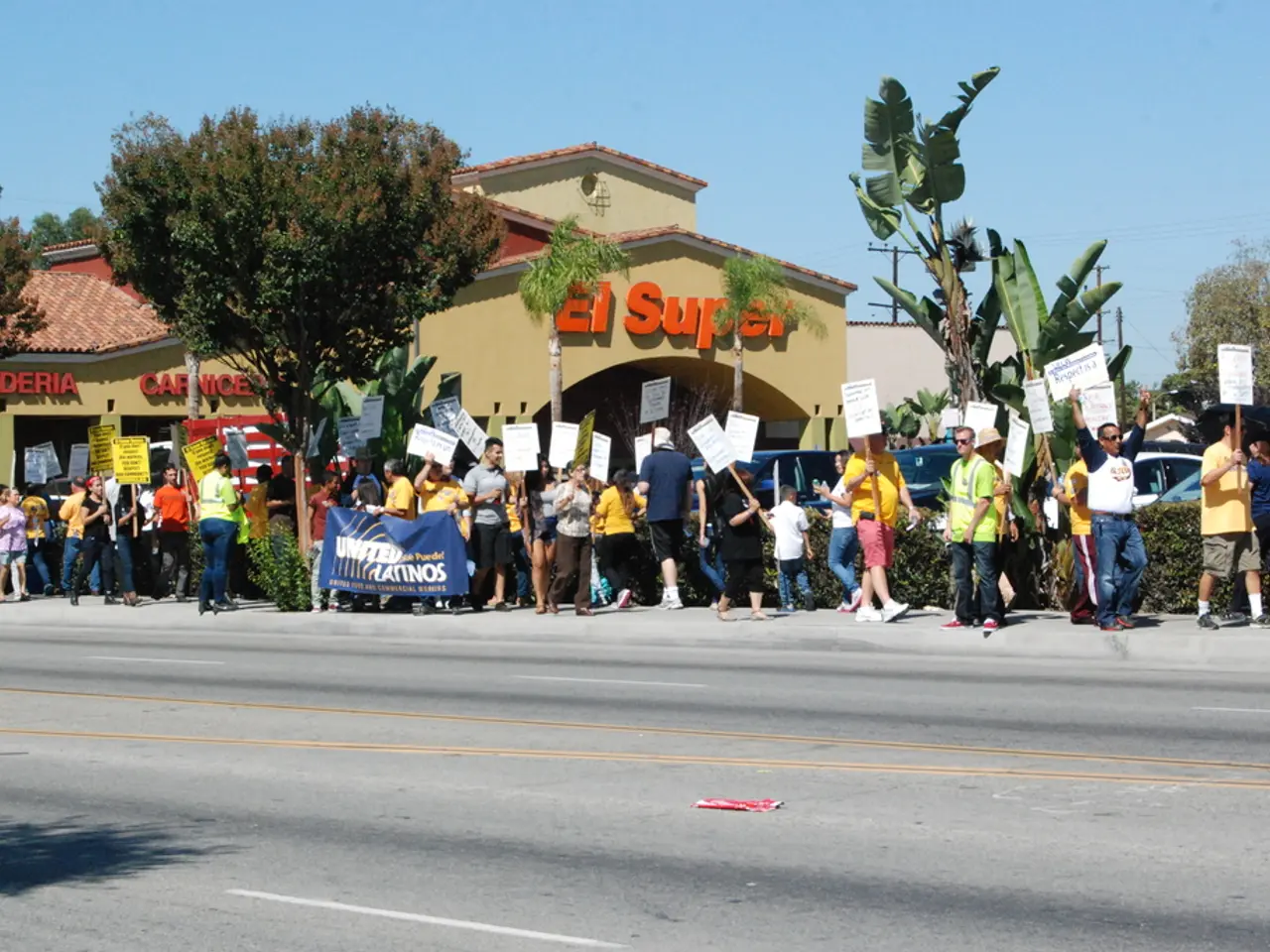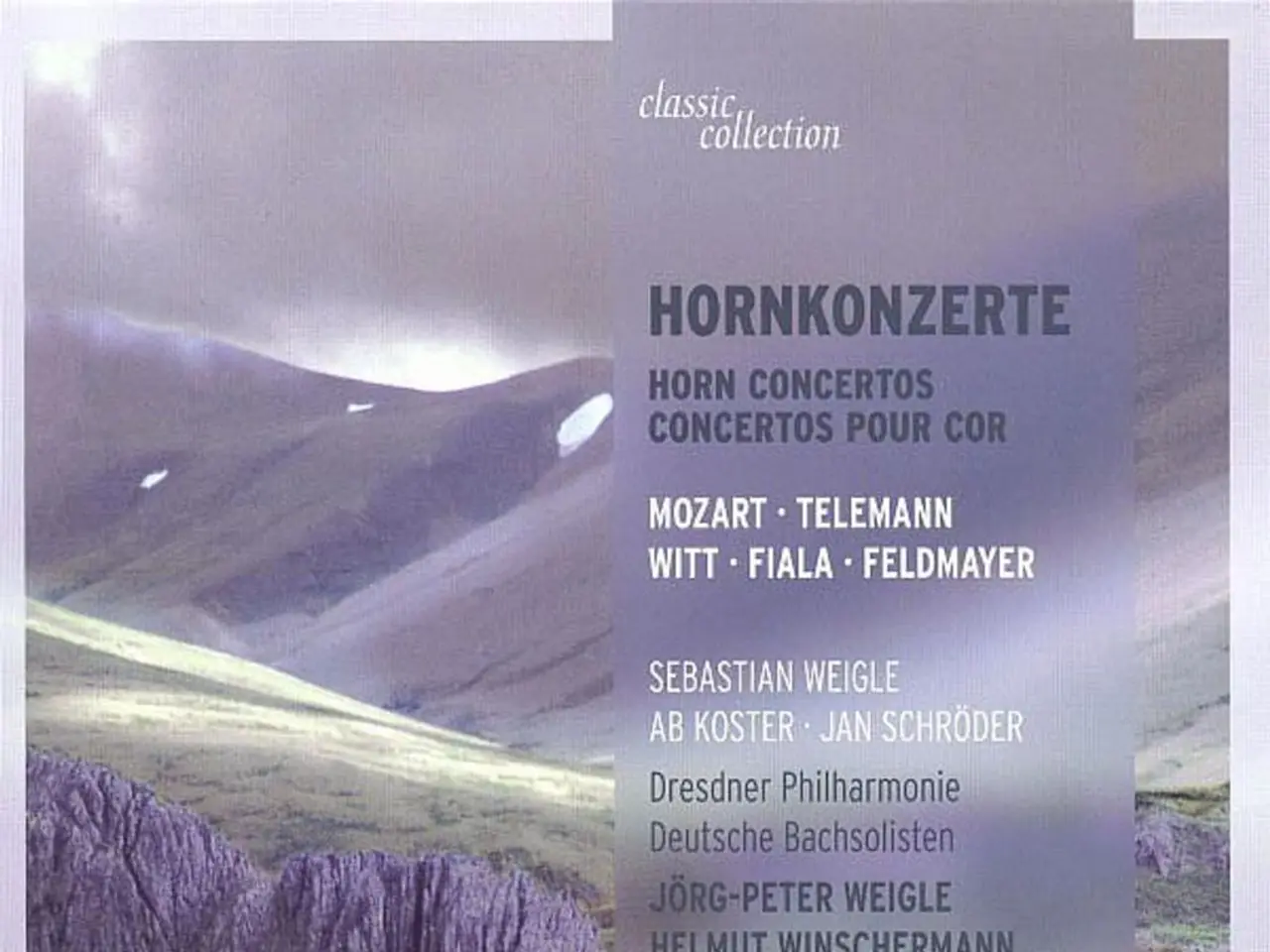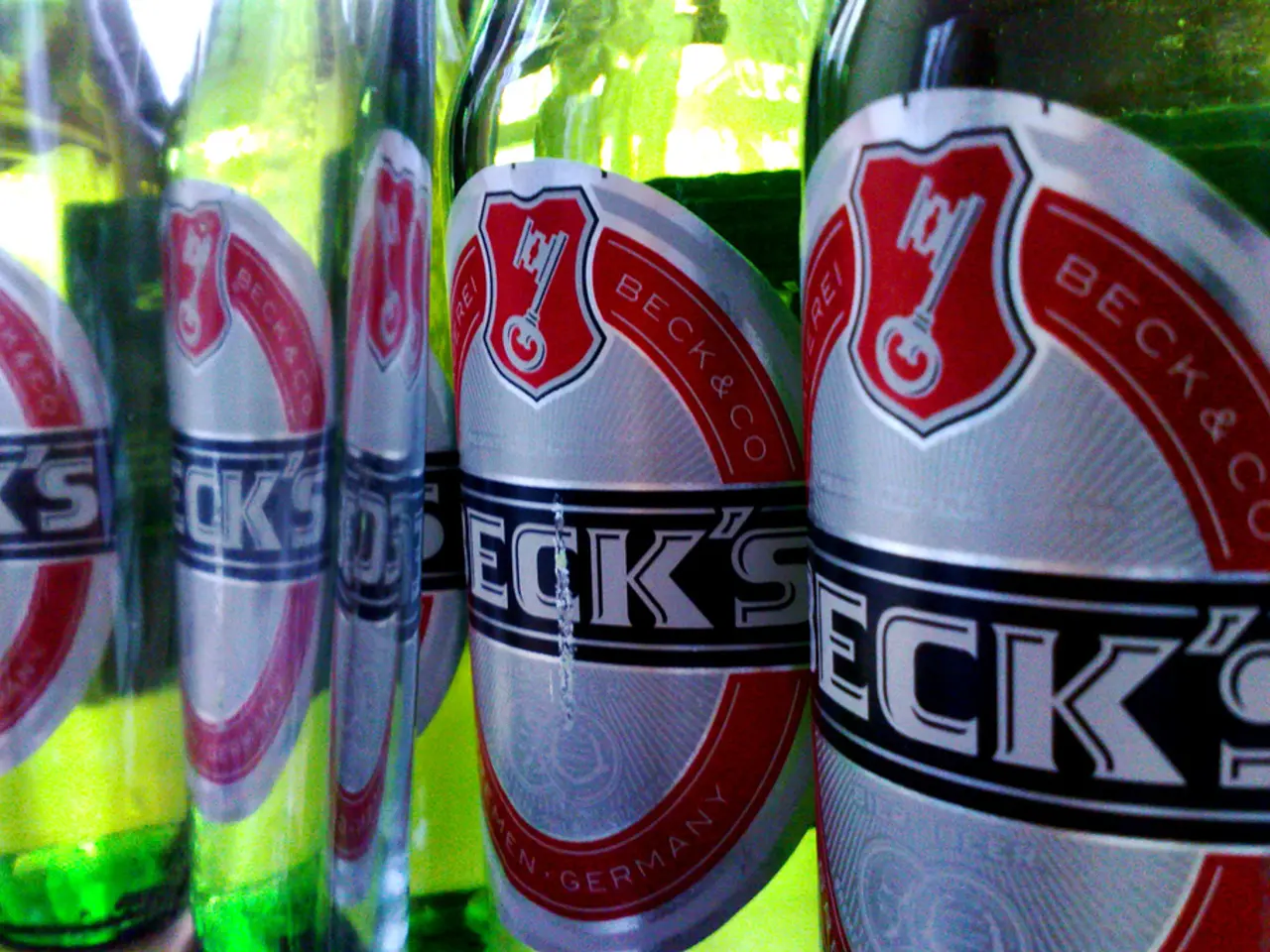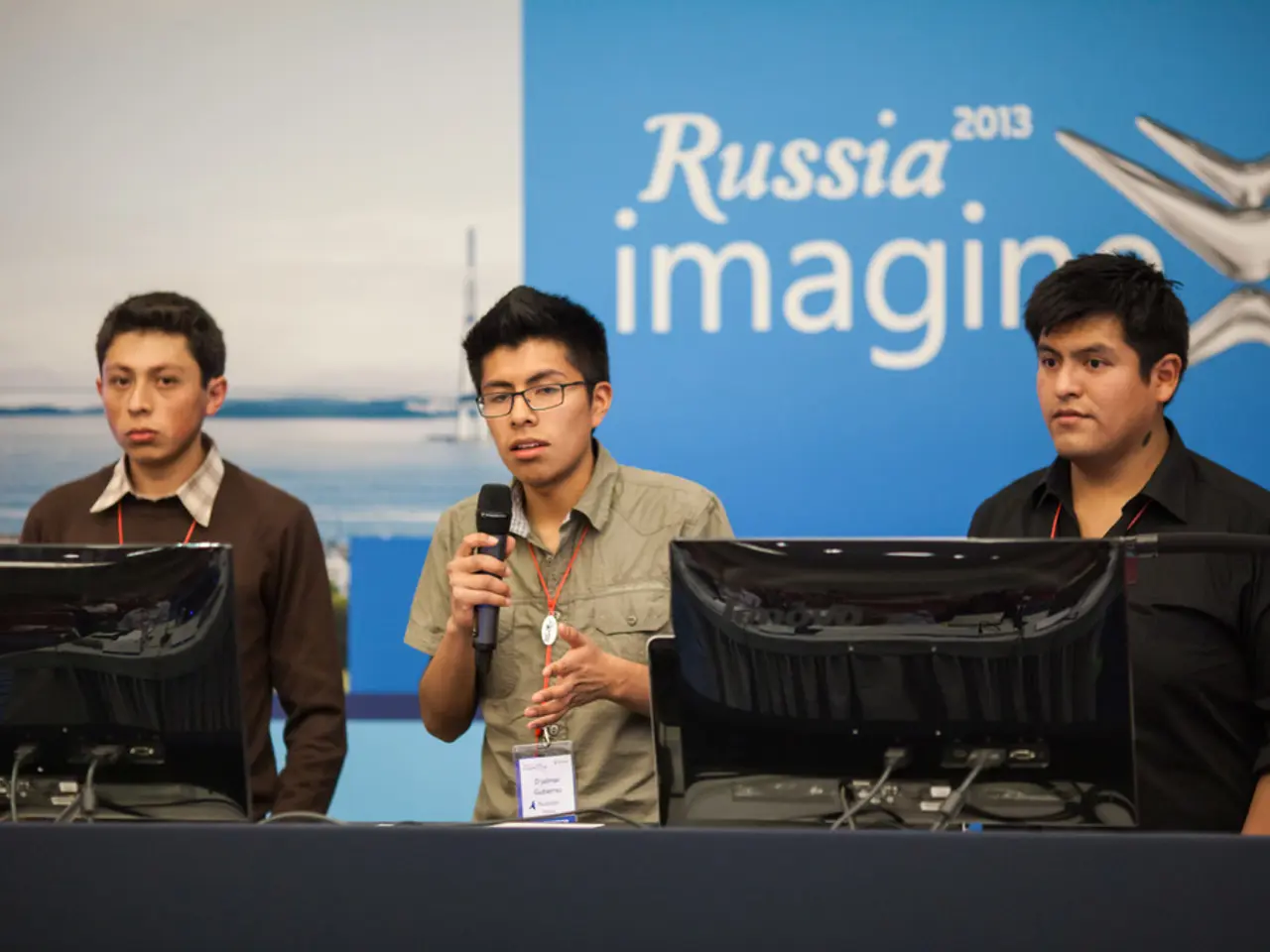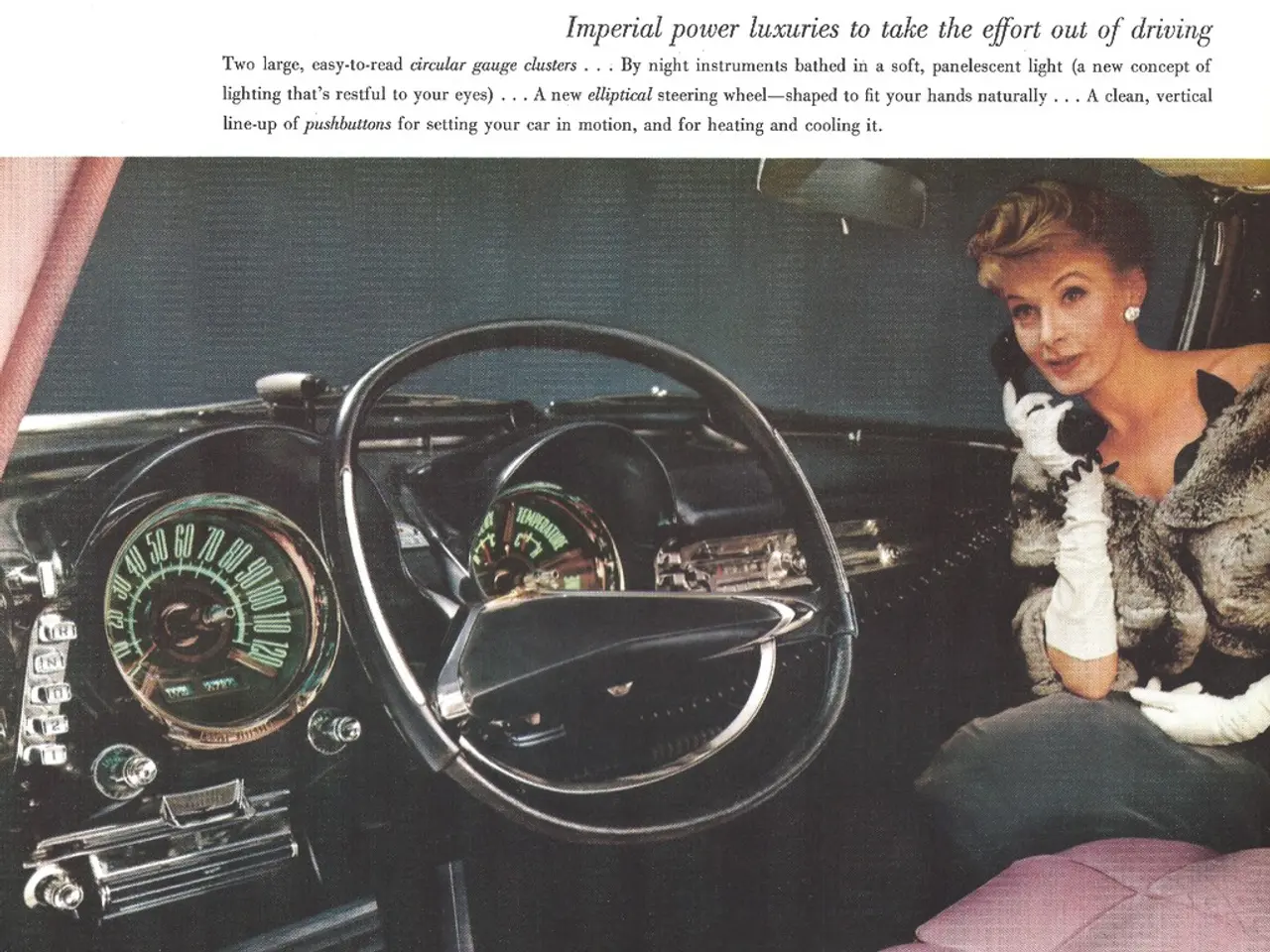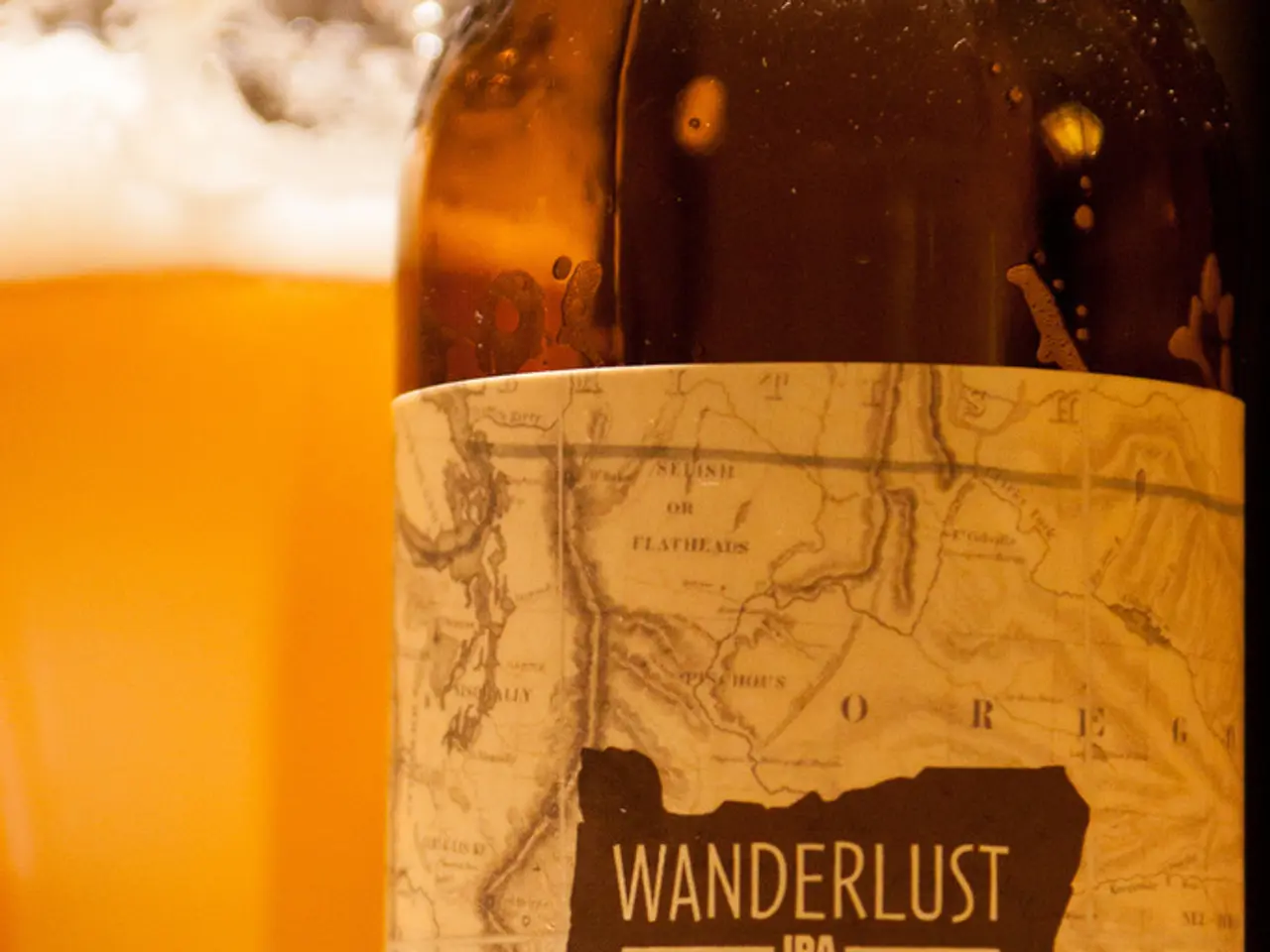Far-right party, Alternative für Deutschland, re-emerges in public discourse
Germany's Political Landscape Shifts According to Latest Insa Poll
The most recent Insa Sunday Trend poll, conducted from July 28 to August 1, has shed light on the current party standings in Germany. Here's a breakdown of the poll results:
- CDU/CSU: 27%
- AfD: 24-25%
- SPD: 14-15%
- Grüne (Greens): 10.5-11.5%
- Die Linke (The Left): 10%
- BSW: 3.8-4.5%
- FDP: 3-3.5%
- Others: around 5%
The CDU/CSU and AfD are the two largest parties, each polling around a quarter of voter support, with the CDU/CSU slightly ahead. The traditional centre-left SPD and Greens significantly lag behind, and smaller parties like Die Linke and BSW hover around the 4-10% range.
Implications for Coalition Governments
The current governing coalition under Friedrich Merz, composed of CDU/CSU (center-right) and SPD (center-left), collectively receives only about 47% of the vote and virtual parliamentary seats, putting them at risk of losing majority control if an election were held now.
The 5% electoral threshold applies, so parties polling under this (like FDP currently at ~3%) would fail to enter parliament unless they represent national minorities. Given that Bundestag majority requires at least 316 out of 630 seats, no single party approaches this threshold, so coalition-building remains necessary.
The rise of AfD (right-wing, populist) at about 24-25% creates a significant bloc but given mainstream parties' reluctance to enter coalitions with AfD, forming a government would require complex multi-party coalitions. Potential coalition scenarios might include a broadened "grand coalition" (CDU/CSU + SPD + Greens), but even this could struggle for majority, or a coalition including Die Linke and Greens alongside SPD and possibly CDU/CSU might need consideration, although ideological divides make it challenging.
The growth of AfD and decline in CDU/CSU support signals increased fragmentation, complicating government formation and possibly leading to unstable or minority governments. In a coalition with the AfD, the CDU/CSU would have 52 percent, potentially enabling them to govern the country.
In summary, the Insa poll indicates a fragmented Bundestag with no clear majority, necessitating carefully negotiated coalitions, possibly involving three or more parties across ideological lines, to form a stable government by 2029.
[1] Insa-Umfrage: Union und AfD führen (Insa-Survey: Union and AfD lead) - Bild (German newspaper) [2] Insa-Umfrage: SPD und Grüne sinken (Insa-Survey: SPD and Greens decline) - Bild (German newspaper)
- The latest Insa poll suggests a significant shift in Germany's political landscape, with the CDU/CSU and AfD being the largest parties, leading to potential implications for policy-and-legislation and general-news.
- Given the results of the Insa poll indicating a fragmented Bundestag with no clear majority, the formation of coalition governments could require complex negotiations involving multiple parties across ideological lines, thus impacting politics and policy-and-legislation.

